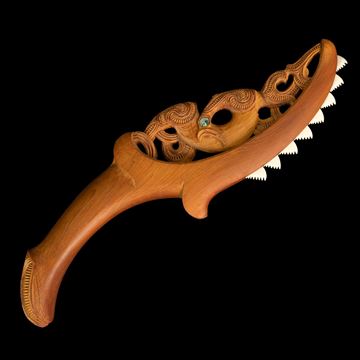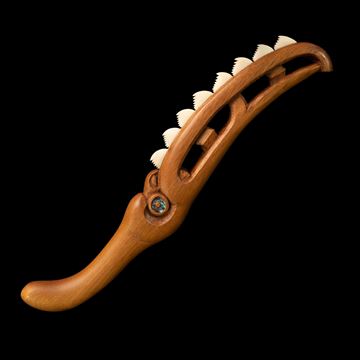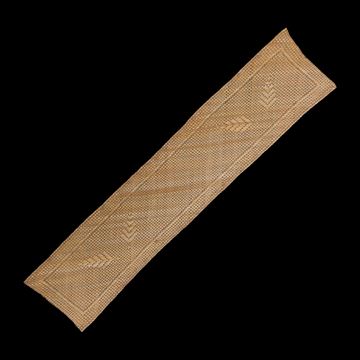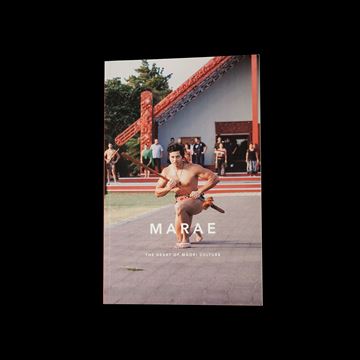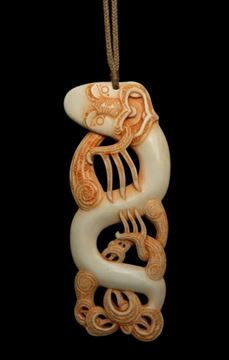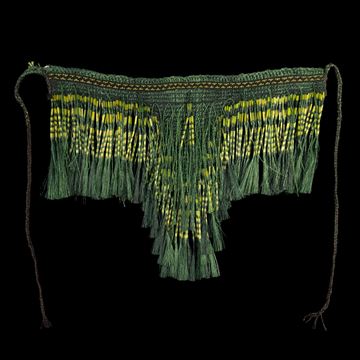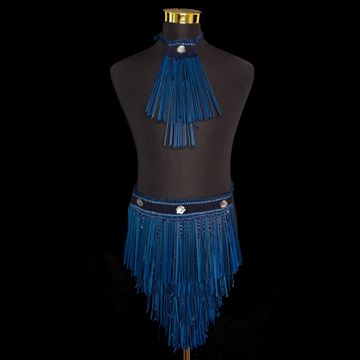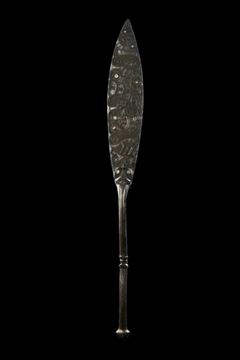
Āhua Gallery
Select Subcategory
Māripi - CI2895
Māripi are a traditional meat cutting tool. They are fashioned with a wooden handle and sharks’ teeth carved from Kōiwi (beef bone) to create a serrated edge.
Material: Rātā, Kōiwi (Beef Bone) & Pāua (Abalone)
Measurements: 340mm x 100mm x 30mm
$4,200.00
Māripi - CI3233
Māripi are a traditional meat cutting tool. They are fashioned with a wooden handle and sharks’ teeth carved from Kōiwi (beef bone) to create a serrated edge.
Material: Rātā, Kōiwi (Beef Bone) & Pāua (Abalone)
Measurements: 370mm x 60mm x 30mm
$3,500.00
Takapapa - 5129HM
In former times, marae had no wharekai (dining halls) to what we are familiar with today. During those times, specific ‘food mats’ were laid out in the middle of the wharenui (meeting house) and the food for the manuhiri (guest) was placed on them. This takapapa has been weaved to be used as a table runner.
Material: Harakeke
Measurements: 1110mm x 230mm
$750.00
Marakihau - 0267UN
Marakihau were believed to harass and prey on shore-living people or sea-travellers. Some were said to be the spirits of departed men, an example being the famed chief Te Tahi, ancestor of the Awa people of Whakatane where a marakihau carving decorates a meeting house.
Material: Koiwi (Beef Bone)
Measurements: 130mm x 50mm
$2,900.00
Maro - 4905TE
The maro is a frontal apron tied around the waist and is a traditional garment that is worn by both men and woman. This maro has been fashioned with strands of muka fibre within the flax.
Material: Harakeke & Muka
Measurements: 680mm x 480mm
$1,395.00
Maro & Neck Piece Set - 4912TE
The maro is a frontal apron tied around the waist and is a traditional garment that is worn by both men and woman. This maro has been fashioned with strands of muka fibre within the flax.
Maro
Material: Harakeke & Muka
Measurements: 470mm x 340mm
Neck Piece
Material: Harakeke & Muka
Measurements: 305mm x 80mm
$2,900.00
Bronze Hoe
The paddle or hoe was the means of propulsion for the Māori waka (canoe). While the hoe was primarily a paddle, it also doubled as a weapon when the need arose. Carved paddles were the property of the chief and were highly valued. The hoe came in different styles and the handles and blades differed from area to area.
$45,000.00

